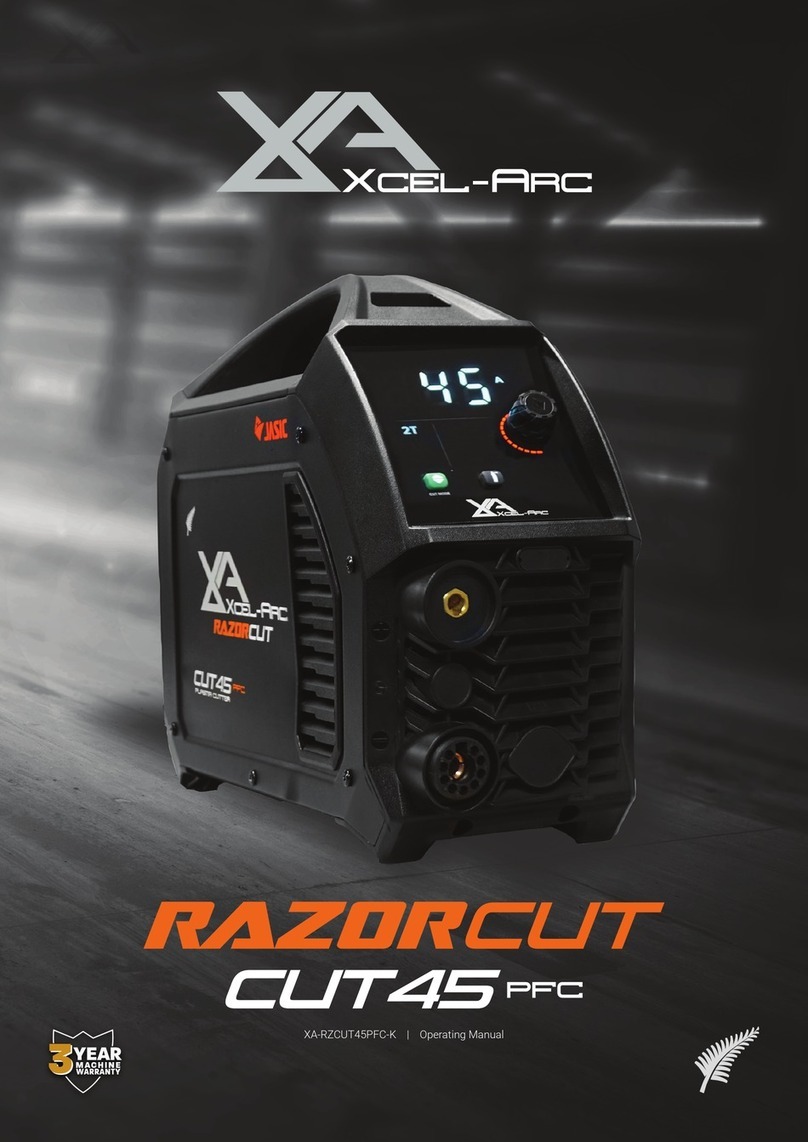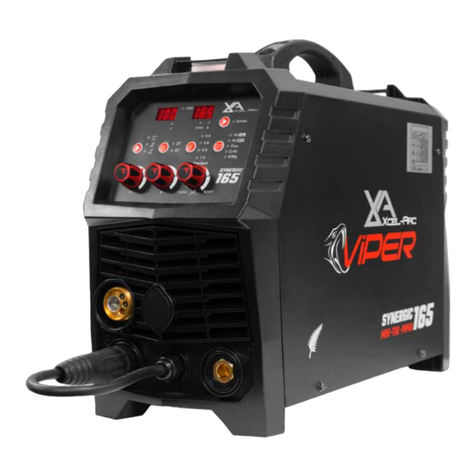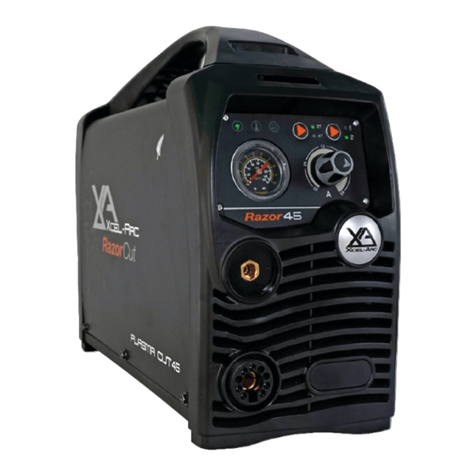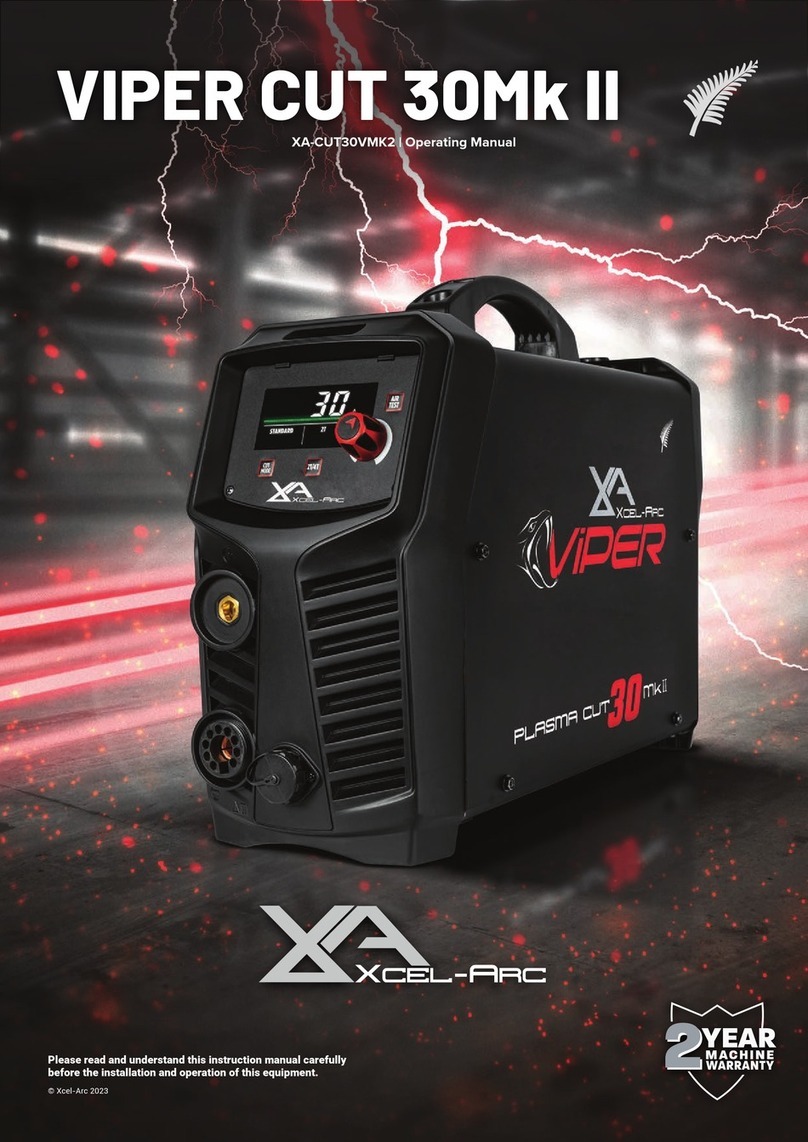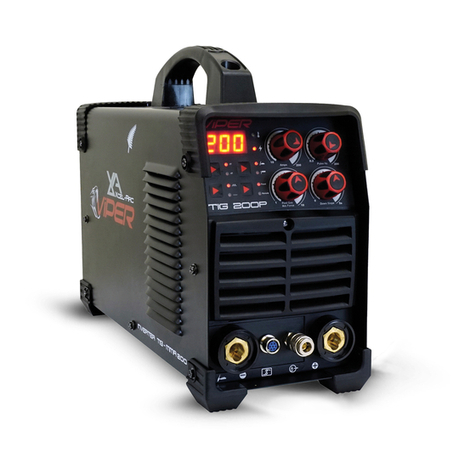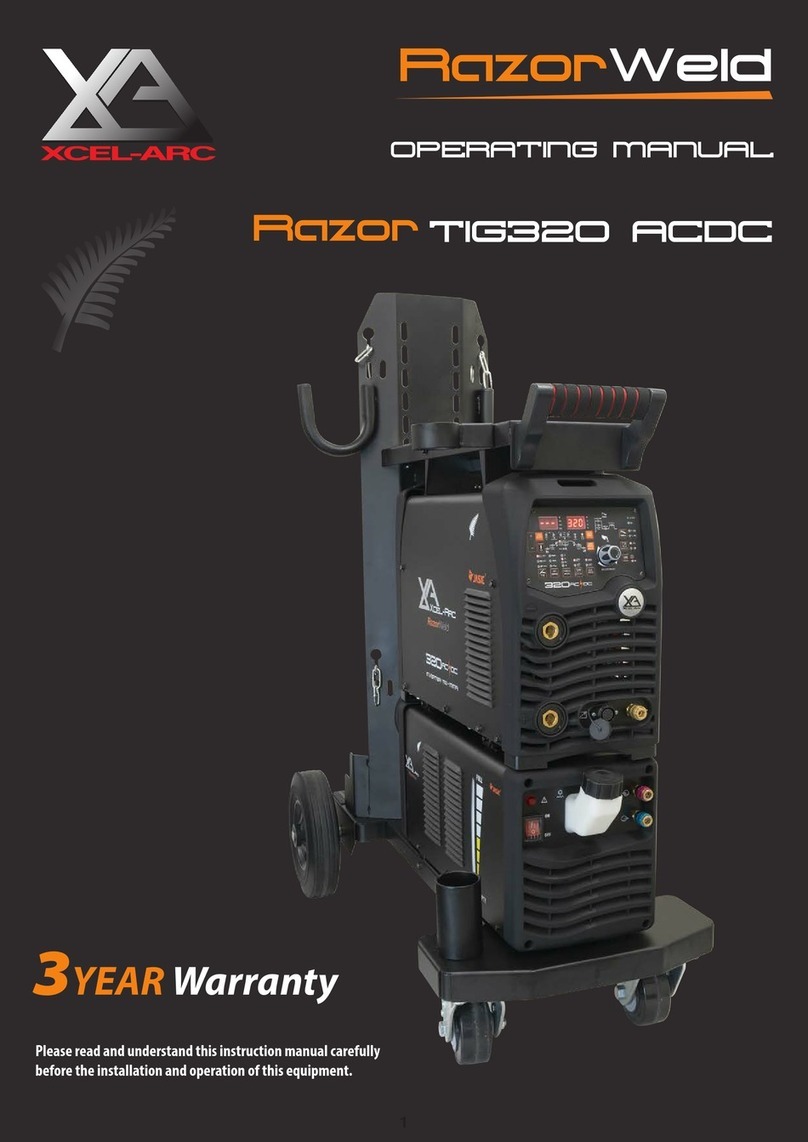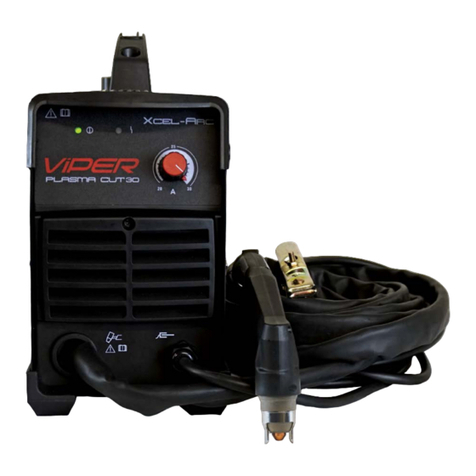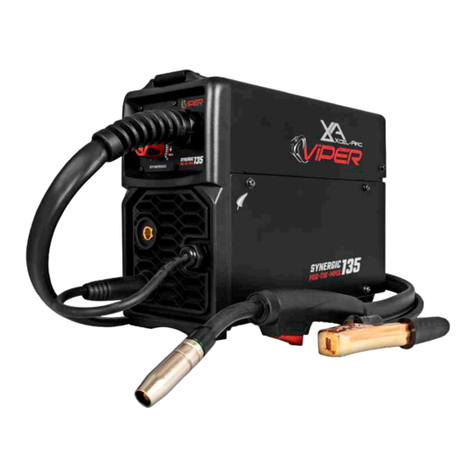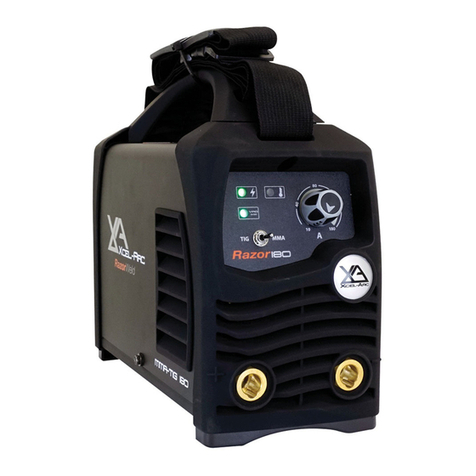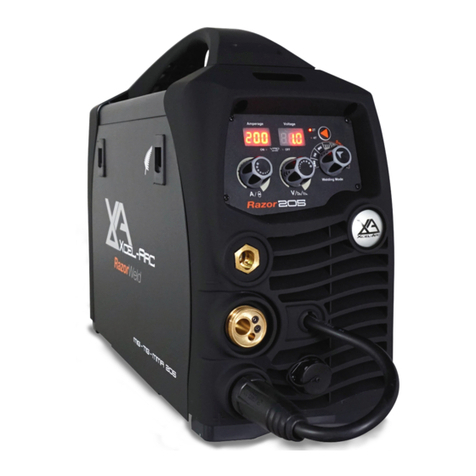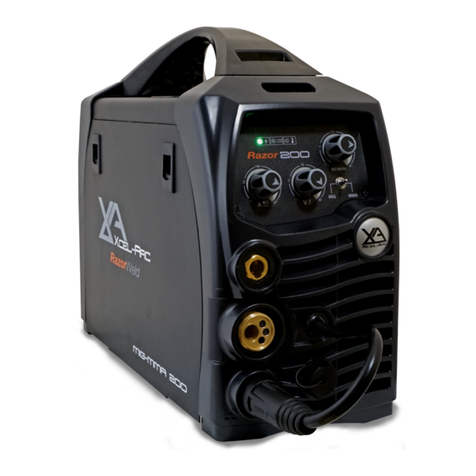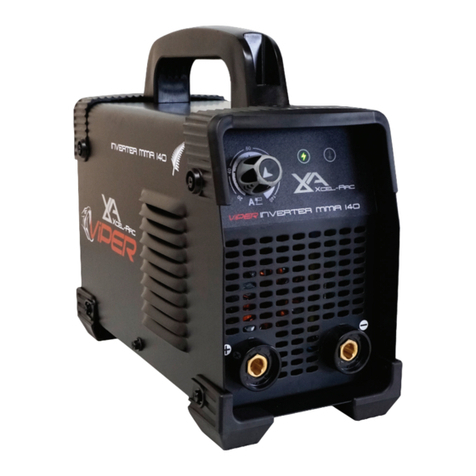
RAZORWELD™ ARC 630 - MMA/CAG/TIG Welder Manual | 7
ARC63O
RAZORWELD ARC 630 FEATURES
Technical Data
Power Supply 415V 3-Phase ±10%
I
i
e MMA 31.0 Amps
TIG 31.6 Amps
IMax MMA 62.0 Amps
TIG 50.0 Amps
Welding Current Range 20 ~ 630 Amps
No Load Voltage (OCV) 90V
Duty Cycle @ 40ºC as per AS/NZ60974-1 25% @ 630A MMA
100% @ 315A MMA
40% @ 630A TIG
100% @ 400A TIG
Power Factor 0.7
Eciency ≥80
ElectrodeDiameter φ1.6~φ6.0
Protection Class IP21S
Insulation Class H
Cooling AF
Dimensions (LxWxH) 550 x 240 x 445mm
Weight 33.5kg
CerticationApproval AS/NZ60974-1
Features
■New MCU control system
■MMA (stick electrode)
-SelectableOn/OVRD(VoltageReductionDevice)
- Hot start (improveselectrodestarting)
- Arc Force (boostscurrenttopreventelectrodeextinguishing)
- Excellent arc stability with all electrodes
■DC-TIG
- Lift Arc ignition (preventstungstenstickingduringarcignition)
- Ultra smooth DC-TIG welding current
■ Arc Air Gouging Mode with High OCV
■ Thermaloverloadprotection
■Generator compatible
■ Toleranttovariablepowersupply
Product Code: XA-ARC630RZ-K
Standard Package includes: ARC630RZ Machine and Manual
Earth Lead & Arc Lead are optional
Overview
The RazorWeld ARC630isasuperiorqualityinverterweldingmachinefromXcel-Arc.ItsprimaryfunctionisDC-MMA(Stick)welding,
and it also oers DC-TIG capabilities with Lift-Arc Ignition. This advanced welding machine utilizes the latest generation MCU control
system,resultinginexceptionalarccharacteristicsandhighreliability.Moreover,itissturdyandportable.TheDC-MMAweldingfunction
produces a smooth and stable arc, enabling high-quality welds for a variety of materials, including cast iron, stainless steel, and low
hydrogen.Additionally,theinclusionofHot-StartandArcForce,combinedwithSelectableVRD,makesitperfectforon-sitework,making
it an excellent choice for professionals and contractors alike. The Carbon Arc Gougingfeatureisanewadditiontothemachine,making
itperfectforweldremoval,crackremoval,backgouging,andwelddefectrepairsforcarbonsteels,alloysteels,stainlesssteels,andnon-
ferrousmaterials.Themachine’soptionalXA26VTigTorchprovideshighlevelDC-TIGweldingofsteel,stainlesssteel,bronze,andcopper.
TheLift-ArcTIGfunctionisexceptionalanddeliversperfectarcignitioneverytimewithoutanystickingorinclusionofthetungstenelectrode
to the workpiece. It produces high-quality TIG welds with remarkable smoothness and stability.
TheARC630RZisahighlyversatilemachinesuitableforawiderangeofapplications,includingmediumtoheavyindustrialuse,sitewelding,
farming,andgeneralrepairandmaintenancework.Itscompactdesignoersgreatportabilitywithoutsacricingpower.Furthermore,it
isbuilttospecicationsandcomplieswithAS/NZ60974-1manufacturingstandards.Overall,theRazorWeldARC630RZisaremarkable
machinethatoerssuperiorperformance,reliability,andportabilityforallweldingneeds.
230V 3-Phase 630 Amp DC Welder MMA/CAG/TIG
Selectable VRD - Stick Electrode, Lift Arc DC TIG
RAZORWELD ARC630RAZORWELD ARC630
Optional machine accessories available - www.xcelarc.nz
Welds: Steels, Stainless, Cast Iron, Bronze, Copper
XA-ARC630RZ-K
Standard Package
